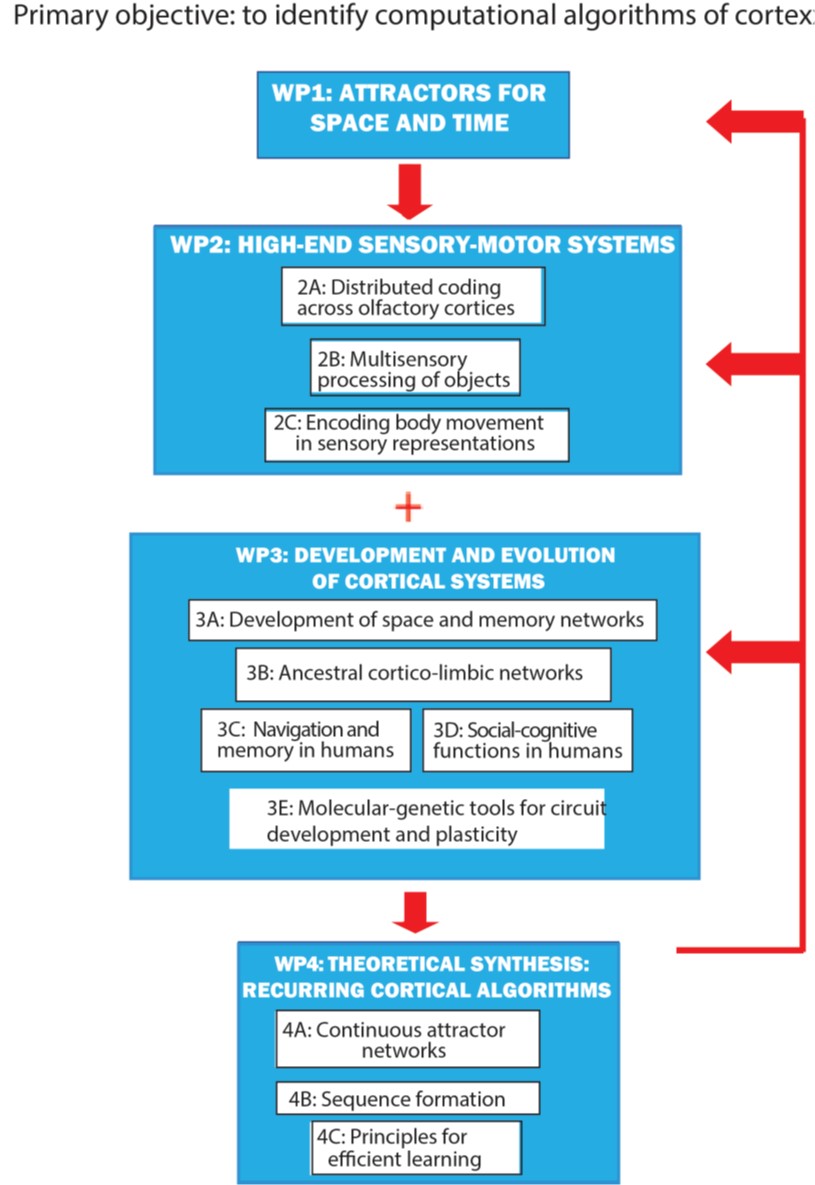WP2: High-end sensory-motor systems - The Kavli Institute for Systems Neuroscience
WP2: High-end sensory-motor systems
About
Sensory systems transform extrinsic sensory impulses into internal representations which individuals use to make decisions and act. Regardless of modality, sensory internalization is fundamentally integrative, applying both feedforward and feedback architectures to link disparate systems together. Here, we will use trans-regional, population-scale recordings with Neuropixels probes and 2P calcium imaging (Section 8b) to identify the algorithms by which sensory inputs are transformed during internalisation. We will cover the spectrum from pure to integrated sensory modalities, and from low- to high-end cortices, by investigating a range of pathways and functions including (WP2A:) the feedforward assimilation of olfactory input into high-end cortices, (WP2B:) the integration of visual and tactile signals underlying object recognition, and (WP2C:) the calibration of visual processing against motor feedback. We will determine whether these functions emerge from specific computational processes, such as attractor or sequence dynamics, how they are coordinated over anatomically extended circuits, and how they change during learning. Ultimately, we will assess whether algorithms are shared or diverge across functions and pathways.
Researchers

WP2A: Distributed computation in cortical olfactory pathways
Lead: Soledad Gonzalo Cogno

WP2B: Multisensory processing of objects
Lead: Maximiliano Jose Nigro

WP2C: Embodied sensation and cognition
Lead: Jonathan Whitlock

